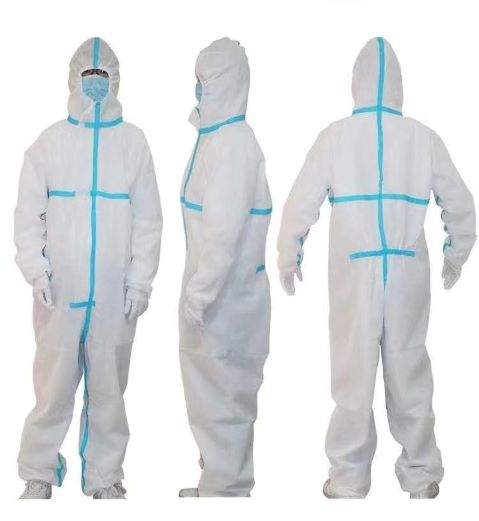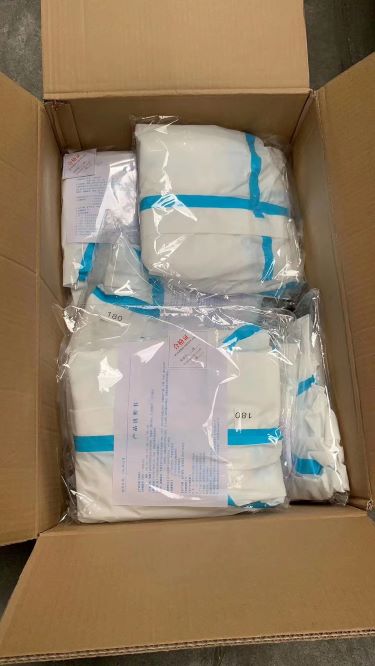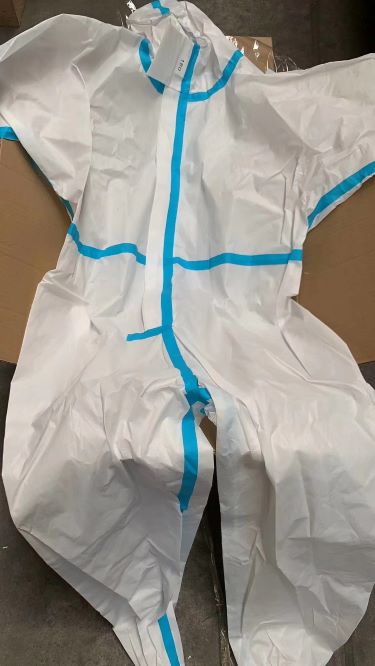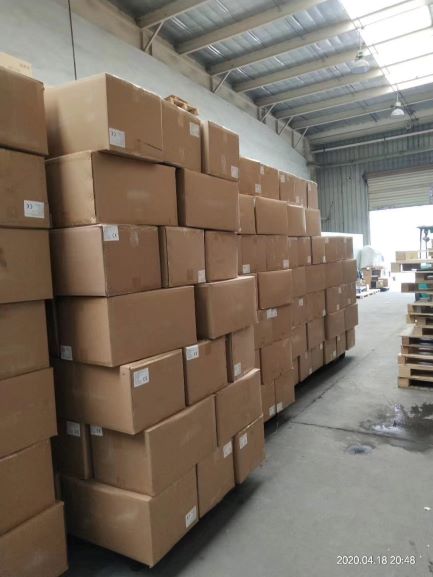Coverall Gown
Release time:2020-07-20 15:54:47Views:






Coverall Gown
Medical protective clothing refers to protective clothing used by medical personnel (doctors, nurses, public health personnel, cleaning personnel, etc.) and people entering specific medical and health areas (such as patients, hospital visitors, personnel entering infected areas, etc.). Its function is to isolate bacteria, harmful ultrafine dust, acid-base solution, electromagnetic radiation, etc., to ensure the safety of personnel and keep the environment clean.
In addition to the specifications and safety requirements of the materials themselves, the performance of medical protective clothing mainly includes protection, comfort, physical and mechanical properties and other aspects
1. Protection
Protective property is the most important performance requirement of medical protective clothing, mainly including liquid barrier, microorganism barrier and particle barrier.
Liquid barrier refers to that medical protective clothing should be able to prevent the penetration of water, blood, alcohol and other liquids, with hydrophobicity of above grade 4, so as not to contaminate clothes and human body. To prevent the blood, body fluid and other secretions of the patient from infecting the carried virus to medical personnel during the operation.
Microbial barrier includes the barrier to bacteria and viruses. The barrier to bacteria is mainly to prevent the contact transmission (and reverse transmission) of medical staff to the surgical wound surface of the patient during the operation. The barrier to viruses is mainly to prevent cross-infection between doctors and patients caused by viruses carried in the blood and body fluids of patients when medical personnel contact them.
Particulate matter barrier refers to preventing viruses transmitted through the air from being inhaled or attached to the skin surface in the form of aerosol and absorbed by the human body.
2. Comfort
Comfort includes air permeability, water vapor permeability, drapability, quality, surface thickness, electrostatic performance, color, light reflection, odor, skin sensitization, etc. The most important is the air permeability and moisture permeability. In order to enhance the protective effect, protective clothing fabrics are usually laminated or laminated, resulting in thick and poor air permeability and moisture permeability, which is not conducive to perspiration and heat removal after long-term wear. The antistatic requirement is to prevent the operation clothes from absorbing a large amount of dust and bacteria due to static electricity in the operating room, which is unfavorable to the wound of the patient, and to prevent sparks generated by static electricity from detonating volatile gases in the operating room and affecting the accuracy of precision instruments.
3. Physical and mechanical properties
Physical and mechanical properties mainly refer to the tear resistance, puncture resistance, abrasion resistance and other capabilities of medical protective clothing materials. Avoiding tearing and puncture provides a passage for bacteria and virus to spread, and abrasion resistance can prevent floc dropping from providing a place for bacteria and virus to propagate.
4. Other performance
In addition to the properties listed above, medical protective clothing should also have disinfection tolerance, good washing color fastness, shrinkage prevention, no combustion, no toxicity, no irritation, no harm to skin and other properties.
Medical protective clothing refers to protective clothing used by medical personnel (doctors, nurses, public health personnel, cleaning personnel, etc.) and people entering specific medical and health areas (such as patients, hospital visitors, personnel entering infected areas, etc.). Its function is to isolate bacteria, harmful ultrafine dust, acid-base solution, electromagnetic radiation, etc., to ensure the safety of personnel and keep the environment clean.
In addition to the specifications and safety requirements of the materials themselves, the performance of medical protective clothing mainly includes protection, comfort, physical and mechanical properties and other aspects
1. Protection
Protective property is the most important performance requirement of medical protective clothing, mainly including liquid barrier, microorganism barrier and particle barrier.
Liquid barrier refers to that medical protective clothing should be able to prevent the penetration of water, blood, alcohol and other liquids, with hydrophobicity of above grade 4, so as not to contaminate clothes and human body. To prevent the blood, body fluid and other secretions of the patient from infecting the carried virus to medical personnel during the operation.
Microbial barrier includes the barrier to bacteria and viruses. The barrier to bacteria is mainly to prevent the contact transmission (and reverse transmission) of medical staff to the surgical wound surface of the patient during the operation. The barrier to viruses is mainly to prevent cross-infection between doctors and patients caused by viruses carried in the blood and body fluids of patients when medical personnel contact them.
Particulate matter barrier refers to preventing viruses transmitted through the air from being inhaled or attached to the skin surface in the form of aerosol and absorbed by the human body.
2. Comfort
Comfort includes air permeability, water vapor permeability, drapability, quality, surface thickness, electrostatic performance, color, light reflection, odor, skin sensitization, etc. The most important is the air permeability and moisture permeability. In order to enhance the protective effect, protective clothing fabrics are usually laminated or laminated, resulting in thick and poor air permeability and moisture permeability, which is not conducive to perspiration and heat removal after long-term wear. The antistatic requirement is to prevent the operation clothes from absorbing a large amount of dust and bacteria due to static electricity in the operating room, which is unfavorable to the wound of the patient, and to prevent sparks generated by static electricity from detonating volatile gases in the operating room and affecting the accuracy of precision instruments.
3. Physical and mechanical properties
Physical and mechanical properties mainly refer to the tear resistance, puncture resistance, abrasion resistance and other capabilities of medical protective clothing materials. Avoiding tearing and puncture provides a passage for bacteria and virus to spread, and abrasion resistance can prevent floc dropping from providing a place for bacteria and virus to propagate.
4. Other performance
In addition to the properties listed above, medical protective clothing should also have disinfection tolerance, good washing color fastness, shrinkage prevention, no combustion, no toxicity, no irritation, no harm to skin and other properties.



